There are several possibilities to use the effects of ejection and turbo expansion to cool the air with minimal power consumption.
1. The simplest of them is an ejection fan.
A conventional fan does not cool the air itself. It only creates a flow of air that cools the surfaces of other objects.
The ejection fan cools the air already in its housing on 5-10 dergee of Celsius.
This effect is achieved by the fact that the fan housing has the cone-shaped cuts.
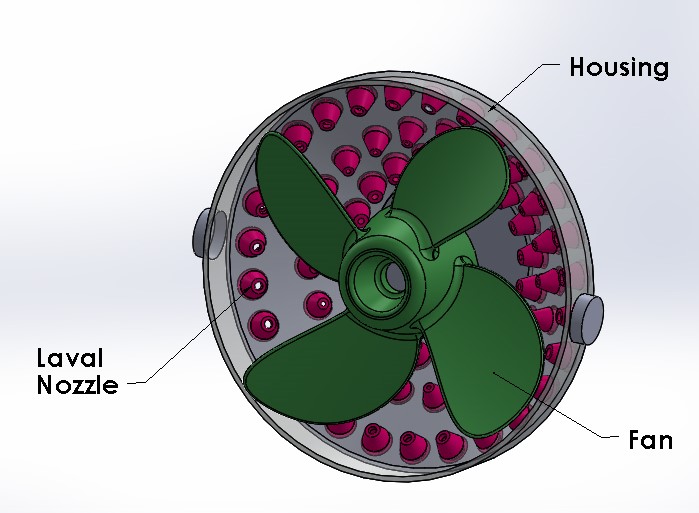
When the propeller pump out air from the casing, then air enters through the cone-shaped cuts.
According to Joule–Thomson effect , air is compressed in a wide part of the cuts, and when it leaves the narrow part, it expands and cools.
The propeller does not spend additional energy on creating a vacuum inside the casing. So the work on cooling is carried out by atmospheric pressure.
Other configurations are possible with different propeller locations.
2. The combined turbine uses the effect of turbo expansion to cool the air.
The side vanes pump out the air from inside the turbine and create low pressure there.
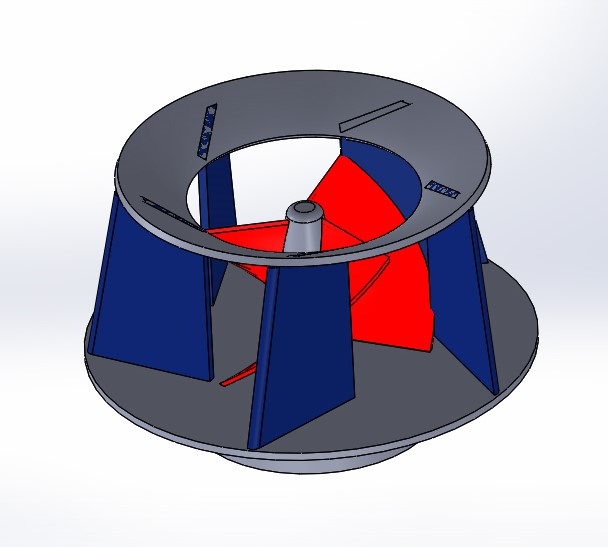
Under the influence of atmospheric pressure, the air enters the center of the turboexpander and expands on it, cooling itself.
3. Turbo Air Conditioner uses both effects simultaneously and more efficiently.
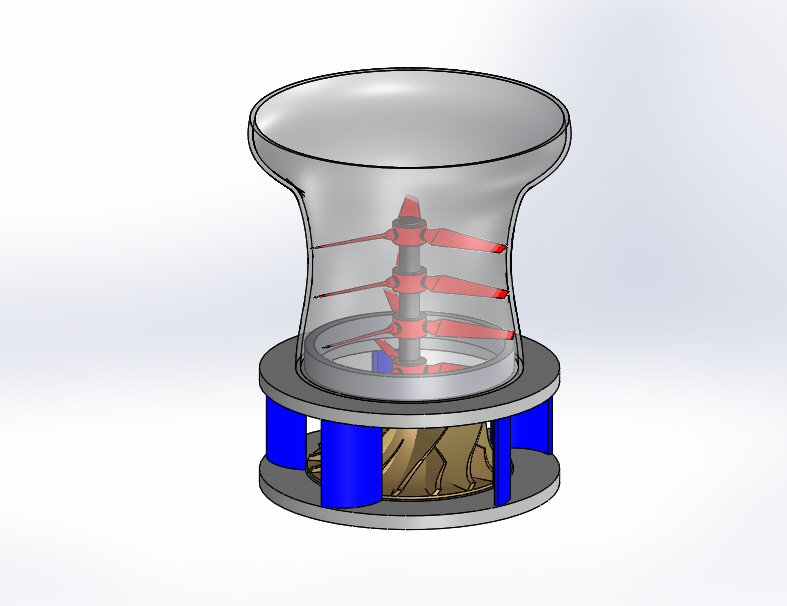 This turbo air conditioner is the most energy efficient in the world because it not only cools the air, but also turns its heat into electricity. This turbo air conditioner is the most energy efficient in the world because it not only cools the air, but also turns its heat into electricity.
The effect of the turbo air conditioner is based on the "magic" property of the turbo expander, which can transform the heat of air directly into its power of rotation.
This effect is enhanced by the ejection effect.
That is, turbocondicioner does not consume energy to cool the air, but takes energy from it, cooling it as a result of this.
Of course, the effect of turboexpander was known 100 years ago, but it is used only for the production of liquid oxygen, since this method is considered very energy intensive - because the air flow must have great speed and pressure.
But our technology allows us to reduce energy consumption by at least 5 times, since we use static atmospheric pressure and, in addition, new innovative details increase the absorption of the kinetic energy of the flow.
Unlike existing apparatuses, our turbo air conditioner uses ejection energy.
There are two versions. In the first, the compressor housing itself acts as an ejector; in the second, the ejector is located between the compressor and the expander.
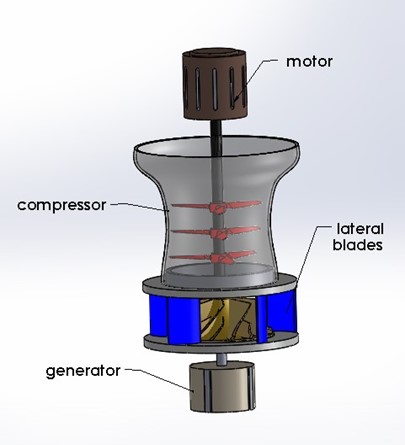 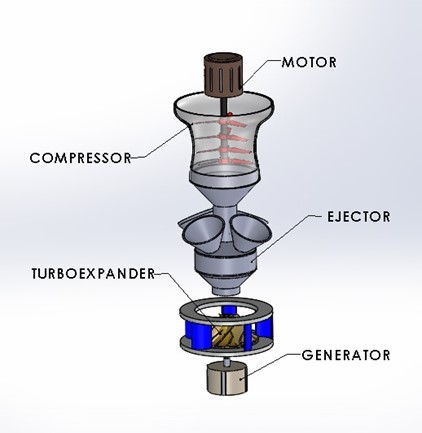
In addition, it is possible that in the second version the compressor and the expander will not be coaxial.
The air from the compressor falls on the turboexpander, expands on it and therefore cools. But unlike its predecessors, this air flow is enhanced by static atmospheric pressure according to the ejection effect.
Accordingly, the compressor requires 3-5 times less power.
In addition, the side blades on the turboexpander absorb the residual kinetic energy of the flow, resulting in a generator produces more electricity.
These figures provide simple diagrams for easy perception. In fact, the first version has a confuser between the compressor and the expander. In addition, its mode of operation is different - the power of the side blades is greater than the power of the propellers. In the second version, on the contrary, the compressor power is much more than the power of the side blades.
Other variants of the power ratio are possible with different variants of coaxialities.
For example, the ejector can be used in the traditional layout of the expander and compressor - in this case, it will be located on the duct.
The advantage of any version will show additional calculations and experiments.
But it is clear that the generator partly renews the energy that the compressor motor has spent.
|